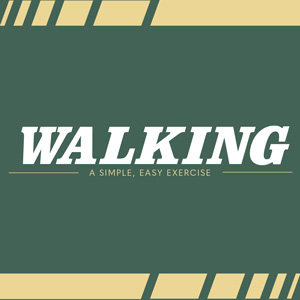 Want an easy way
to help improve your health? Make walking part of your routine. Simply putting
one foot in front of the other can have surprising health benefits.
Want an easy way
to help improve your health? Make walking part of your routine. Simply putting
one foot in front of the other can have surprising health benefits.
Among its many
benefits, walking can lower blood pressure and cholesterol, potentially
reducing the risk of heart disease. It can help keep your muscles and bones
strong and help you maintain your sense of balance, which is especially
important as you get older. And walking can produce endorphins, feel-good
chemicals that can boost your mental health.
Get going
To get the most
out of this easy exercise, take these steps.
1. Fit walking
into your day. Adults should try to get at least 150 minutes
of moderate-intensity aerobic physical activity, such as brisk walking, each
week—broken down into 30 minutes a day five days per week. To reach that goal,
you can start by taking three 10-minute walks three times a day. As your
stamina improves, try walking longer and making it more challenging by picking
up the pace and including hills. And everything counts, including walking
instead of driving, whenever possible.
2. Check out
your local mall. Indoor malls offer well-lit places to
walk, no matter the weather. Their even surfaces can help reduce the risk of
falls. Plus, malls are free of car traffic, and there's always a restroom
nearby. To get started, see if your local mall offers an organized walking
program. It's a fun way to make new friends.
3. Keep safety
on your radar. Wherever you walk, keep these safety tips
in mind:
• See and be
seen outside. In low-light conditions, such as dawn or
dusk, wear light or bright clothing so drivers can see you. Better yet, wear
reflective shoes and clothing and walk with a flashlight.
• Wear
supportive shoes. A running or walking shoe for proper
footing can help reduce slips and falls.
• Use walking
paths and sidewalks. If you must walk on a road without a
sidewalk, face oncoming traffic.
• Be careful at
crosswalks. Before crossing the street, look to the left,
right and then left again—even on a one-way street, and even if you're crossing
the street with the walk signal. Don't assume drivers will see you or obey a
sign or signal.
Check with your
Family Medicine or Internal Medicine provider if you have questions about
undergoing a new exercise regimen. Call 863-680-7190 to schedule an
appointment.
Sources:
Centers for Disease Control and Prevention; National Highway Transportation
Safety Administration